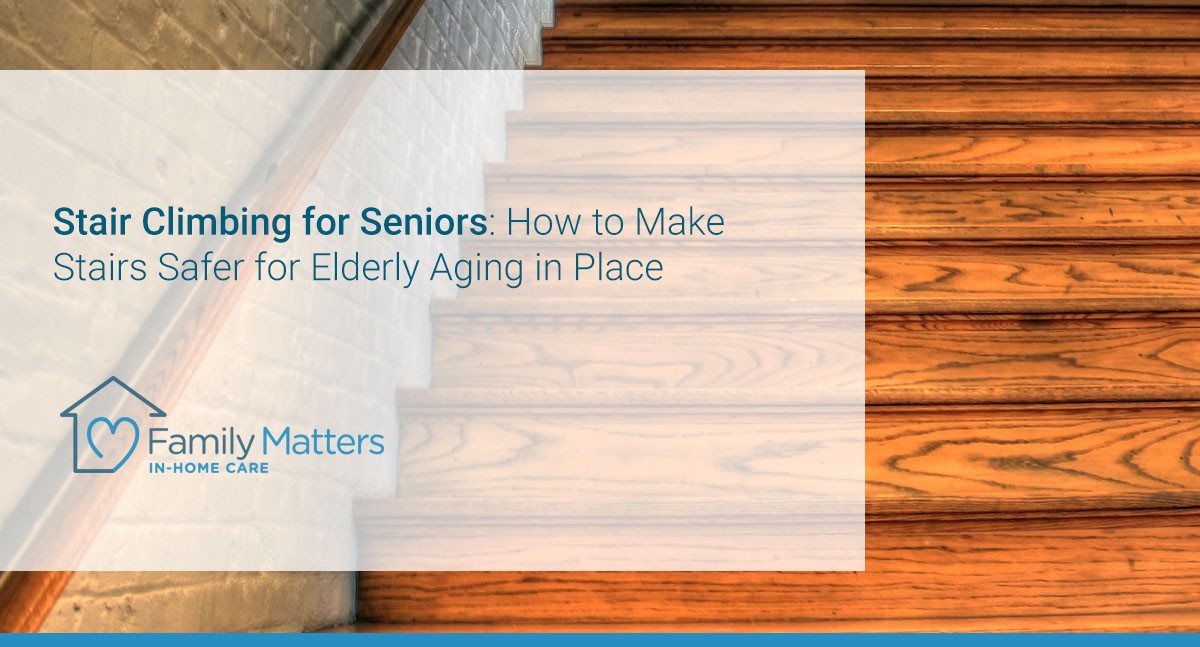
Stair Climbing for Seniors: How to Make Stairs Safer for Elderly Aging in Place
For most people, taking a fall here and there may cause a few bruises or a scrape at best. For seniors, however, falls are a bit more frequent and can be much more harmful. In fact, studies show that one out of every four Americans over 65 takes at least one fall each year.
Falls for seniors aren’t only more likely to cause extreme bruising or bleeding, they can often lead to broken bones or even brain injuries depending on the nature of the fall. Plus, healing from traumatic wounds is much more difficult and slow-going for people over 65 than it is for younger adults, which means a fall can often result in a lengthy hospital stay involving surgery.
What causes older people to fall most frequently?
Though there are many catalysts within a typical home that can cause a senior to take a fall, one of the most common is stairs. Reports state that injuries in people over 85 are more often caused by stairs than any other in-home hazard.
Many senior living facilities make it possible for seniors to avoid using stairs altogether, but what if the individual wants to stay in their home? Luckily, there are many ways to make your loved one’s stairs safer and more manageable so that they can continue living at home safely and comfortably.
How to make stairs safer for elderly adults aging in place
- Add railings to the stairs. Most stairways between stories are built with railing for the safety of people of all ages. If any stairs in your aging family member’s home lack rails, whether it’s an entire set between stories or just a small number between a split-level room, installing railing on both sides can greatly improve the stairs’ safety. In fact, the CDC recommends the installation of stair railings for all seniors living at home. Make sure that the railings you install are easy to grip and available from the bottom of the stairs to the top with no gaps.
- Invest in a stairlift. Electric stairlifts are designed to carry seniors safely up and down the stairs, which can be especially useful for those that have trouble walking or limited hip and knee mobility. Stairlifts are extremely easy to use, can be installed within a day, don’t damage the walls at all, and can be efficiently stowed so that visitors can use the stairs as normal.
- Remove carpet runners. Carpet runners on stairs can be a beautiful addition to any home décor. However, for seniors, carpet runners can create increased risk of slipping and falling, particularly for those who use a cane. In order to make the surface of the stairs as safe and sturdy as possible, carpet runners should be removed. Additionally, adding non-slip strips can be beneficial for the safety of seniors using the stairs, especially for wooden stairs.
- Find ways to reduce stair time. If the bedroom and bathroom are on the second floor but the kitchen and living room are on the first, your loved one will have to put themselves at risk multiple times a day in order the climb and descend the stairs between levels. Explore new ways to organize the home, such as transforming a downstairs guestroom into a bedroom for your loved one. You may not be able to eliminate stair usage entirely, but anything that you can do to reduce the amount of time spent on the stairs will help to increase your family member’s safety.
- Add a spot to rest. Stair climbing for seniors isn’t only dangerous, it can also just be a tiring experience. If the staircase has a landing, consider adding a bench or chair for your loved one to take a rest on their way up or down the stairs. This may make it easier for them to finish the journey safely.
If you or your family member is considering in-home care as part of a plan to age in place, contact Family Matters In-Home Care today for a free consultation. Our team is dedicated to supporting your family and helping older adults enjoy life in the comfort of their own home for as long as possible.
Some of the services offered by Family Matter In-Home Care include: Alzheimer’s & Dementia Care, Bed & Wheelchair Transfer Assistance, Companionship, Housekeeping & Meal Preparation, Personal Care, Recovery Care, and Transportation.
Serving the San Francisco Bay Area and Greater San Diego, Family Matter In-Home Care has offices throughout California including: Campbell, CA, Roseville, CA, San Marcos, CA, and San Mateo, CA.
